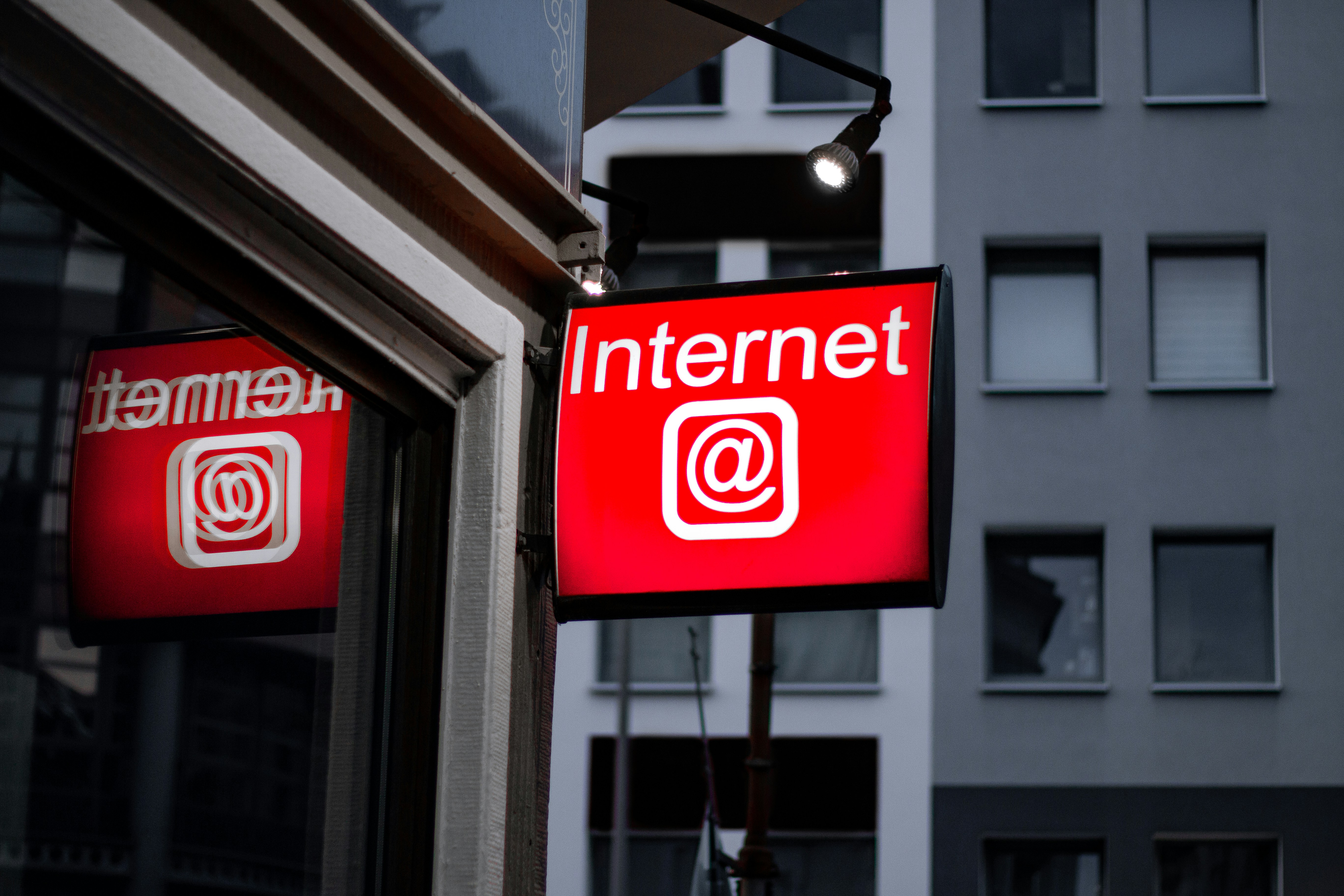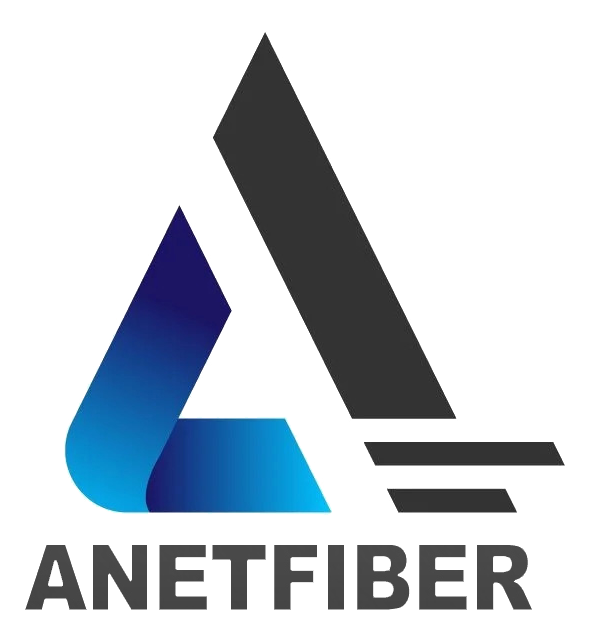5 Key Differences Between Fiber and Cable Internet for High-Speed Connectivity

Introduction to Fiber and Cable Internet
In today's fast-paced world, having access to high-speed internet is essential for both work and leisure. But what exactly does high-speed internet entail, and how do fiber optics and cable internet play a role in delivering this crucial service?
What is High-Speed Internet?
High-speed internet refers to a type of internet connection that provides faster data transmission rates compared to traditional dial-up connections. This allows users to browse the web, stream videos, download files, and engage in online activities with minimal delays. The demand for high-speed internet has surged in recent years due to the increasing reliance on digital technologies in various aspects of daily life.
Overview of Fiber Optics and Cable Internet
Fiber optic technology utilizes thin strands of glass or plastic fibers to transmit data using light signals. This advanced method enables the seamless transfer of large amounts of data at incredibly fast speeds. On the other hand, cable internet relies on coaxial cables made of copper to deliver internet connectivity. While both technologies aim to provide high-speed internet, they operate using distinct mechanisms that impact their performance and reliability.
As we delve deeper into the realm of high-speed connectivity, it's important to understand the intricate workings behind fiber optics and cable internet. By gaining insight into these technologies, individuals can make informed decisions when selecting an internet service provider that aligns with their specific needs.
Understanding the Technology Behind High-Speed Internet
How Fiber Optics Work
Fiber optics revolutionized high-speed internet connectivity by employing glass or plastic fibers to transmit data using light signals. The glass or plastic fibers, known as optical fibers, serve as the medium for carrying information over long distances. These fibers are designed to minimize signal loss and interference, ensuring that data travels swiftly and efficiently.
The Role of Glass or Plastic in Transmitting Data
The use of glass or plastic in fiber optics is integral to its functionality. When data is transmitted through these fibers, it undergoes total internal reflection within the core of the fiber. This process allows the light signals to travel without significant attenuation, maintaining the integrity of the transmitted data throughout its journey.
Benefits of Fiber Optics for High-Speed Connectivity
Fiber optics offer numerous advantages for delivering high-speed internet. Firstly, they enable significantly higher bandwidth capacity compared to traditional copper cables, allowing for faster and more reliable data transmission. Additionally, fiber optic connections are less susceptible to electromagnetic interference, ensuring consistent performance even in environments with high electrical noise.
How Cable Internet Works
Cable internet relies on a network infrastructure that utilizes coaxial cables made of copper to deliver internet connectivity to users' homes and businesses. These cables transmit data signals between internet service providers and subscribers, enabling access to online resources and services.
The Use of Copper Wires in Data Transmission
The use of copper wires is fundamental to cable internet's operations. These wires facilitate the transmission of electrical signals that carry digital data from one point to another within the network infrastructure. While effective for transmitting data over short distances, copper wires have limitations when it comes to maintaining signal strength over extended lengths.
Limitations of Cable Internet in High-Speed Connectivity
Despite its widespread availability, cable internet faces limitations in delivering high-speed connectivity due to factors such as signal degradation over long distances and susceptibility to electromagnetic interference. As a result, users may experience reduced speeds during peak usage times or encounter inconsistencies in their internet connection quality.
Comparing Fiber Optic and Cable Internet Speeds
When it comes to high-speed internet, the comparison between fiber optic and cable internet speeds is crucial for users seeking optimal connectivity solutions. Understanding the reality of gigabit internet access and the importance of symmetrical speeds for uploads and downloads can guide individuals in making informed decisions about their internet service providers.
The Reality of Gigabit Internet Access
Fiber optic internet stands out as a frontrunner in achieving ultra-fast broadband connectivity through gigabit internet access. With fiber optics, users can experience unparalleled data transmission rates, reaching up to 1 gigabit per second (Gbps) or even higher. This exceptional speed capability empowers users to engage in bandwidth-intensive activities such as 4K video streaming, online gaming, and large file downloads with minimal latency.
On the other hand, cable internet speeds may vary depending on factors such as network congestion and infrastructure limitations. While some cable internet plans offer high download speeds, they often fall short when it comes to symmetrical upload rates and consistent performance across different usage scenarios.
Importance of Symmetrical Speeds for Uploads and Downloads
Symmetrical speeds play a pivotal role in ensuring a balanced internet experience for users engaging in both uploads and downloads. Fiber optic internet excels in providing symmetrical speeds, where the upload rates match the download rates. This symmetry is particularly beneficial for activities like video conferencing, cloud backups, and real-time collaboration, where seamless data exchange in both directions is essential.
In contrast, cable internet typically exhibits an asymmetry in speeds, with significantly lower upload rates compared to download speeds. This imbalance can impact user experiences when sharing large files, uploading multimedia content, or engaging in remote work that requires efficient data transfer from the user's device to external servers or platforms.
The disparity between fiber optic and cable internet speeds underscores the significance of selecting an internet service that aligns with specific usage requirements while delivering consistent performance across various online activities.
Fiber Optic vs. Cable Internet: Reliability and Uptime
In the realm of high-speed internet connectivity, reliability and uptime are critical factors that influence users' online experiences. Both Fiber optic internet and cable internet present distinct characteristics in terms of reliability and uptime, shaping users' confidence in their chosen internet service providers.
Fiber Optic Internet Reliability and Uptime
How Fiber Optics Ensure Consistent Internet Access
Fiber optic internet stands out for its exceptional reliability, attributed to the robust nature of fiber optic cables. These cables are highly resistant to external interference, ensuring consistent data transmission without disruptions or signal degradation. The use of light signals in fiber optics also minimizes the impact of electromagnetic interference, contributing to a stable and reliable internet connection for users.
Fiber Optic Internet Coverage Maps and Their Importance
For users considering fiber optic internet, coverage maps play a crucial role in assessing the availability and reliability of this high-speed connectivity option within their geographical area. These maps provide valuable insights into the extent of fiber optic internet infrastructure deployment, helping users make informed decisions about subscribing to services with reliable coverage and minimal downtime.
Cable Internet Reliability and Challenges
Factors Affecting Cable Internet Uptime
Cable internet faces various challenges that can affect its uptime and overall reliability. Factors such as network congestion, hardware limitations, and maintenance issues may contribute to occasional service disruptions or reduced performance during peak usage periods. Additionally, the shared nature of cable internet connections among multiple users can lead to fluctuations in speed and reliability based on concurrent usage patterns.
Dealing with Weather and Physical Damage
One notable challenge for cable internet providers is mitigating the impact of weather-related incidents and physical damage on their network infrastructure. Severe weather conditions, including storms, heavy rainfall, or snowfall, can potentially damage above-ground cable lines or underground installations, leading to service outages until repairs are completed. Furthermore, accidental physical damage caused by construction activities or landscaping work may necessitate prompt restoration efforts to maintain uninterrupted cable internet services.
Choosing the Right Internet for You: Fiber Optic or Cable?
As you weigh the options between fiber optic and cable internet, several factors come into play, including Fiber optic internet plans and pricing, the Fiber optic internet installation process, and Fiber optic internet customer reviews and testimonials. Understanding these elements can guide you in making an informed decision that aligns with your specific connectivity needs.
Fiber Optic Internet Plans and Pricing
When exploring fiber optic internet options, it's essential to consider the diverse range of plans and pricing offered by various Fiber optic internet service providers (ISPs). Different ISPs may provide tailored packages designed to accommodate varying usage patterns and budget considerations. By comparing the available plans, users can identify the most suitable subscription that meets their speed requirements while aligning with their financial constraints.
Understanding Fiber Optic Internet Service Providers (ISPs)
Fiber optic internet service providers (ISPs) play a pivotal role in delivering high-speed connectivity to residential and commercial consumers. These ISPs are responsible for deploying and maintaining fiber optic infrastructure, ensuring reliable access to ultra-fast broadband services. When evaluating ISPs, factors such as network coverage, customer support quality, and service reliability should be taken into account to make an informed selection.
Comparing Fiber Optic Internet Plans and Pricing
Comparing fiber optic internet plans involves assessing key parameters such as download/upload speeds, data caps, contract terms, and additional features like bundled services or equipment offerings. Users should carefully review the pricing structures associated with each plan to determine long-term affordability while maximizing the value derived from their chosen subscription.
Fiber Optic Internet Installation Process
The installation process for fiber optic internet entails several steps that users should be familiar with before committing to this high-speed connectivity option. Understanding the intricacies of installation can help individuals prepare adequately for a seamless transition to fiber optics within their premises.
Steps Involved in Getting Fiber Internet
The initial step in acquiring fiber optic internet involves contacting the chosen ISP to initiate the installation process. Subsequently, a site survey may be conducted to assess the feasibility of deploying fiber optics at the user's location. Following approval, technicians will proceed with laying fiber cables from external distribution points into the property, culminating in internal cabling setup for seamless connectivity.
Preparing for Fiber Optic Internet Installation
Prior to installation day, users are advised to ensure that designated areas for equipment placement are accessible and free from obstructions. Clear communication with the ISP regarding any specific requirements or preferences can streamline the installation process while minimizing potential disruptions during setup.
Fiber Optic Internet Customer Reviews and Testimonials
Gaining insights from existing users' experiences through fiber optic internet customer reviews and testimonials can offer valuable perspectives on service quality, performance consistency, and overall satisfaction levels.
What Users Say About Fiber Optic Internet
User-generated reviews often highlight aspects such as speed reliability, customer support responsiveness, and value for money associated with different fiber optic internet plans. By delving into these firsthand accounts, prospective subscribers can gauge the real-world implications of choosing a particular ISP or plan based on authentic user experiences.
How Customer Feedback Can Guide Your Choice
Customer feedback serves as a guiding compass when navigating through diverse fiber optic internet offerings. Identifying recurring themes across multiple reviews enables users to discern common strengths or potential drawbacks associated with specific ISPs or plans. This collective insight empowers individuals to make well-informed decisions aligned with their expectations for high-speed connectivity solutions.
Final Thoughts on High-Speed Internet Options
As we conclude our exploration of fiber optic and cable internet, it's essential to summarize the key differences and considerations that can guide individuals in making informed decisions regarding their high-speed connectivity options.
Summarizing the Differences
When comparing fiber optic and cable internet, several distinct factors come into play, influencing users' experiences and satisfaction with their chosen internet services. From the technological foundations to speed capabilities and reliability aspects, each option presents unique characteristics that cater to diverse connectivity needs.
Fiber optics, with its utilization of light signals transmitted through glass or plastic fibers, offers unparalleled speed capabilities and symmetrical upload/download rates. The robust nature of fiber optic cables contributes to exceptional reliability and minimal susceptibility to external interference, ensuring consistent internet access for users. On the other hand, cable internet relies on copper wires for data transmission, facing limitations in speed consistency and susceptibility to signal degradation over extended distances.
The reality of gigabit internet access further emphasizes the substantial disparity between fiber optic and cable internet speeds, highlighting the potential for ultra-fast broadband connectivity with fiber optics compared to variable performance with cable internet. Additionally, the importance of symmetrical speeds for uploads and downloads underscores the significance of seamless data exchange in both directions, a feature prominently offered by fiber optic internet.
Reliability and uptime also emerge as crucial factors distinguishing fiber optic and cable internet. Fiber optics demonstrate exceptional resilience against external interference, contributing to consistent performance even in challenging environments. In contrast, cable internet faces challenges related to network congestion, hardware limitations, weather-related incidents, and physical damage that may impact its overall reliability.
Making an Informed Decision for High-Speed Connectivity
In navigating the landscape of high-speed connectivity options, individuals are encouraged to approach their decision-making process with a comprehensive understanding of their specific requirements and preferences. By considering factors such as available plans and pricing from fiber optic internet service providers (ISPs) alongside installation processes tailored to individual premises, users can align their choices with both their connectivity needs and budget constraints.
Moreover, seeking insights from existing users through fiber optic internet customer reviews can provide valuable perspectives on real-world experiences associated with different ISPs or plans. These firsthand accounts offer glimpses into speed reliability, customer support responsiveness, and overall satisfaction levels that contribute to well-informed decisions regarding high-speed connectivity solutions.
Ultimately, selecting the right high-speed internet option involves a thoughtful assessment of technological capabilities coupled with practical considerations such as coverage availability within specific geographical areas. By weighing these elements thoughtfully and leveraging user feedback as a guiding compass, individuals can embark on a journey towards seamless high-speed connectivity that enhances their online experiences across work, entertainment, communication, and beyond.
In conclusion,
Understanding the technological disparities between fiber optic and cable internet is crucial for informed decision-making.
Symmetrical speeds offered by fiber optics present significant advantages for balanced upload/download activities.
Reliability considerations play a pivotal role in shaping users' confidence in their chosen high-speed connectivity options.
User feedback serves as a valuable resource in gauging real-world experiences associated with different ISPs or plans.


